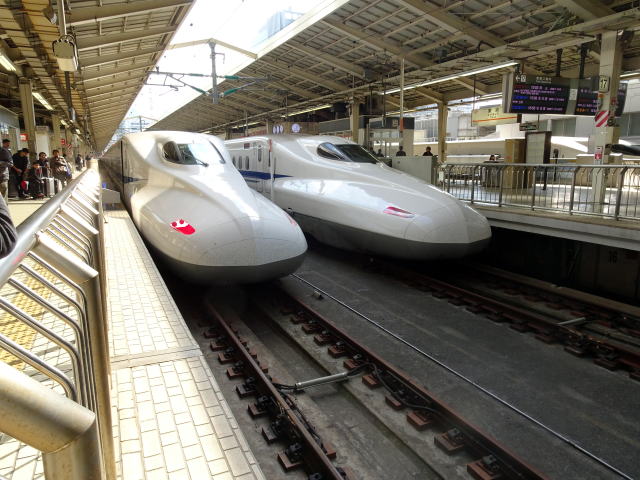
Two types of Shinkansen train at Tokyo terminal station 2017
東京駅に停車している二つのタイプの新幹線列車
The N700 is a Japanese Shinkansen high-speed train with tilting capacity,
which was developed jointly
by the JR Tokai ( Central Japan Railway Company ) and the JR West ( West
Japan Railway Company ),
for use on the Tokaido and Sanyo Shinkansen lines.
The N700 trains allow the trains to maintain the speed of 270 kms/h, even
on 2,500 m radius curves
that previously had a maximum speed of 255 kms/h. Another feature of N700
is that it accelerates
quicker than other Shinkansen trains, with an acceleration rate of 2.6
kms/h/s. This enables it to reach
270 kms/h in only three minutes. After these improvements, trains can travel
between Tokyo and Osaka
in as little as 2 hours and 25 minutes.
The Japan Railway Group, more commonly known as JR Group, consists of seven
for-profit companies
that took over most of the assets and operations of the government-owned
National Railways in 1987.
The JR Group lies at the heart of Japan's railway network, operating a
large proportion of intercity rail
service, including the Shinkansen high-speed rail lines, and commuter rail
service. The group consists
of seven operating companies, which are organized into six passenger operators
and a nationwide
freight operator. Unlike some other groups of companies, the JR Group is
made up of independent
companies.
The list of railway companies, from the northern island of Japan: Hokkaido Railway, JR-Hokkaido,
East Japan Railway, JR-East, Central Japan Railway, JR-Tokail, West Japan
Railway, JR-West, Shikoku
Railway, JR-Shikoku, and Kyushu Railway, JR-Kyushu.
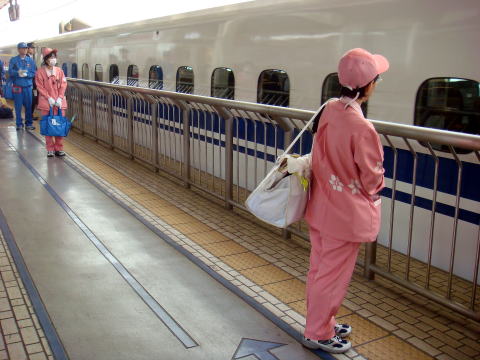 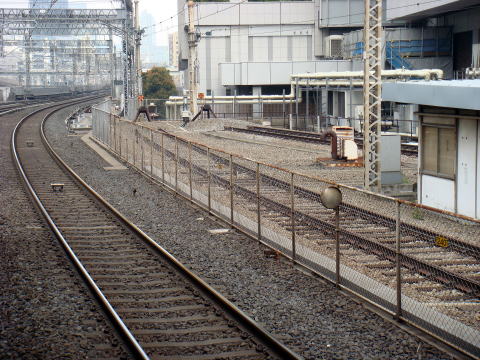
(L) A train garbage collector at the JR-Tokai's plateform of Tokyo Station
2013
(R) The right-half of this photograph shows a buffer stop of the railway
track of JR-Tokai at Tokyo Terminal.
The left-half of the photo is the shinkansen track of JR-East, which extends
to Yamagata, Akita and Aomori.
2013
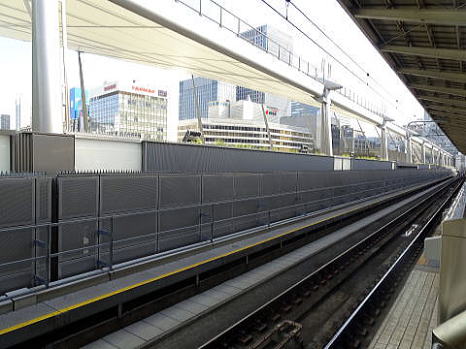 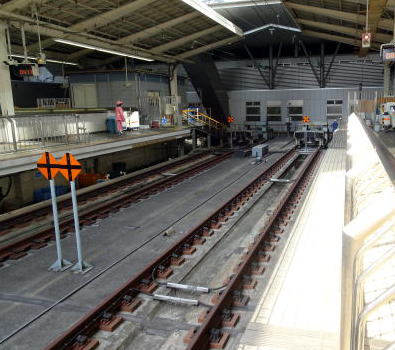
(L) The railway track of JR Tokai at Tokyo terminal station (R) A buffer
stop of a railway track of JR Tokai at Tokyo station 2017
Three major Japanese railway companies think the smoking space in a train
is the superb service to train
passengers.
The Government of Japan allows smoking inside of a train.
The Japan Railway Group, more commonly known as JR Group, consists of seven
for-profit companies
that took over most of the assets and operations of the government-owned
National Railways in 1987.
Smoking is prohibited in all trains of JR-Hokkaido and JR-East. A smoking
booth is provided in an express
train of JR-Tokai, JR-West and JR-Shikoku. In 2010, JR-Kyushu prohibits
smoking in a train. However,
upon completion of a new shinkansen-track line, which connects with Hakata,
and a long-distance running
to Shin-Osaka, the station of JR-Tokai, JR-Kyushu railway company will
provide a smoking booth in their
jointly operated shinkansen trains. JR Tokai and JR West still have super-express
trains, which provide
smoking seats. This policy is criticized by many citizens in Japan.
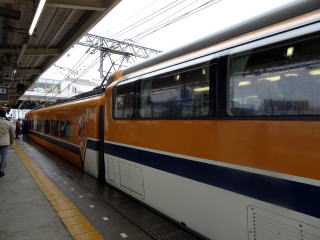   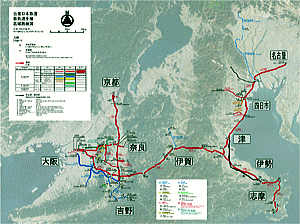
Smoking kills: The ideal train marking for the smoking vehicle of Kinki Nippon Railway
It is a suitable idea to put a mark of a death' head and cigarette on the
body of Kintetsu-Car, so that it
becomes a good photo-subject for many tourists visiting Kyoto, Nara and
Ise-Shima.

 The smoking space in a train is necessary for all smokers, and that is
the superb service to a customer? The smoking space in a train is necessary for all smokers, and that is
the superb service to a customer?
I have traveled over many countries using a train, in Canada, US, India,
Thailand, Taiwan,
Australia, New Zealand and European countries; however, nowadays, I have
never
experienced to hear the announcement of to guide a smoking room or booth
in a train.
This kind of guidance might be all train passengers to recognize the need
of smoking space
in a train, and for smokers, inhibit the feeling not to smoke for a while.
As a result, it might
work as promoting a smoking during his train trip until he arrives at the
destination.
In 2016, 49 countries, including the above-mentioned countries, allows
smoking inside of
the train. Japanese government should restrict such a smoking in a train
by law.
Otherwise, it will put our people in Japan shamed at the coming 2020 Olympic
game.
Junhaku Miymoto, M.D.,PhD.
 Announcement in a train with smoking booth of JR's Tokaido-Shinkansen super- Announcement in a train with smoking booth of JR's Tokaido-Shinkansen super-
express Cars 1, 2 and 3 are for the passengers without seat
reservations. Smoking is not
allowed on this train except in the designated smoking rooms located in
cars 3, 7 and 15.
The smoking room in car No.10 is for the passengers in the Green Cars.
Please refrain
from smoking in the train, including areas at either end of the cars.
|
 The smoking room in the train infringes the health of the passengers. The smoking room in the train infringes the health of the passengers.
 The railway company, Kintestu, leading passengers to health damage The railway company, Kintestu, leading passengers to health damage
 The smoking room in the train adversely affects the health of the passengers. The smoking room in the train adversely affects the health of the passengers.
 Smoking ban in the railway trains of Japan Smoking ban in the railway trains of Japan
A few Japanese railway companies think the smoking car and/or smoking booth in a train is the superb service to train passengers.
 All sleeper-trains in Japan are connecting a smoking vehicle. All sleeper-trains in Japan are connecting a smoking vehicle.
 JR-Tokai's Policy : All Shinkansen train stations between Tokyo and Osaka
will have an enclosed smoking room. JR-Tokai's Policy : All Shinkansen train stations between Tokyo and Osaka
will have an enclosed smoking room.
 JR Shinkansen Tokyo Station: A smoking-restriction policy is different between two JR railway companies. JR Shinkansen Tokyo Station: A smoking-restriction policy is different between two JR railway companies.
 Kyushu Shinkansen provides a smoking room. Kyushu Shinkansen provides a smoking room.
 Smoking ban in JR-Hokkaido trains Smoking ban in JR-Hokkaido trains
 Smoking booth of JR Shikoku's express trains was closed in March 2011. Smoking booth of JR Shikoku's express trains was closed in March 2011.
 JR-East JR-East
 jrn 700 日本語 jrn 700 日本語
●●●●●●●●●●●
It has been announced that all both inside the Tokaido Shinkansen train
will be abolished in March 2024.
JR-West and JR-Kyushu and Kintestu-Express trains will also abolish it
at the same time.
The reason is said by these rail companies to be a decline in smoking rates.
However, smoking had been completely prohibited inside JR-Hokkaido trains
in 2006, JR-East trains in 2007,
except for night trains.
By 2007, smoking on trains had been completely banned in all countries in Europe, USA and Canada.●●●
朗報 東海道新幹線の車内が2024年春から完全禁煙になる。 JR東海は、東海道新幹線の車内にある「喫煙ルーム」
を、2024年の春にすべて廃止すると発表した。 JR西日本も、JR九州も同時期に廃止する。健康増進志向の高まりや
喫煙率の低下が理由だとのこと。2007年に英国をはじめ、世界で列車内の喫煙場所を全廃してから、17年もの歳月を
かけて、やっと世界の鉄道車内全面禁煙の動向に追いついた。国民の健康を守ろうとする政府の関与もなく、数回に
亘る喫煙ブースの廃止を要望した15の学術団体の要請も無視し、喫煙者を保護していこうとする鉄道会社の姿勢を
反映した結果である。誠に情けない話である。
世界の動向にやや遅れたが、JR東日本は、2007年3月18日から新幹線も在来線特急も全面禁煙に設定。鉄道会社
トップの頭脳の違いを明確に証明したものとなった。
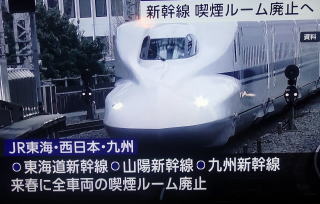 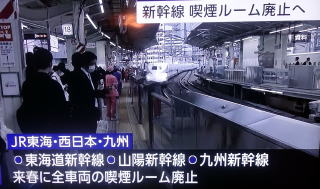 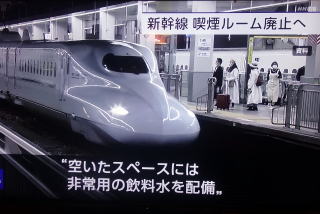
画像引用 NHK 2023.10.17
 2024年3月、JR東海、西日本、九州新幹線の喫煙ブースを廃止 2024年3月、JR東海、西日本、九州新幹線の喫煙ブースを廃止
●Smoking booths on JR Tokai, West Japan, and Kyushu Shinkansen trains will be abolished in March 2024.
|
 学会講演:世界の鉄道車内は全面禁煙 2017 学会講演:世界の鉄道車内は全面禁煙 2017
 日本は世界で唯一、列車内喫煙を容認 Japan is the only country allows smoking in the train. 日本は世界で唯一、列車内喫煙を容認 Japan is the only country allows smoking in the train.
 海外鉄道紀行 In the world, all railway trains should be completely smoke -free. 海外鉄道紀行 In the world, all railway trains should be completely smoke -free.
 JR Shinkansen train with a smoking space 喫煙室のある新幹線 JR Shinkansen train with a smoking space 喫煙室のある新幹線
 2008年2月執筆 2010年7月加筆 2012年6月加筆 2013年3月加筆 2020年8月加筆 2023年10月加筆 医学博士 宮本順伯 2008年2月執筆 2010年7月加筆 2012年6月加筆 2013年3月加筆 2020年8月加筆 2023年10月加筆 医学博士 宮本順伯
★This Web site is link-free.
The article was written in February 2008, and last revised in April 2017,
by Junhaku Miyamoto, M.D., PhD.
Information was added in June 2020, and February 2024.
Copyright (C) 2008 Junhaku Miyamoto, PhD. All right is reserved.
A new information was added in October 2023.
Copyright (C) 2008 Junhaku Miyamoto, PhD. All right is reserved.
|
|
|
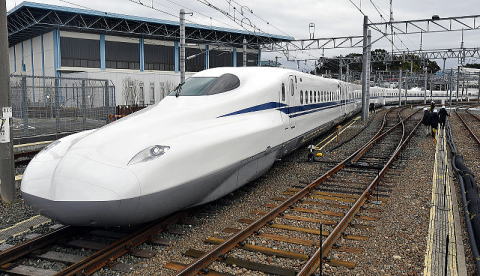 N700S N700S
JR東海
|
|